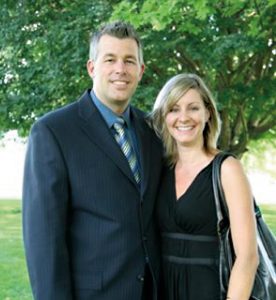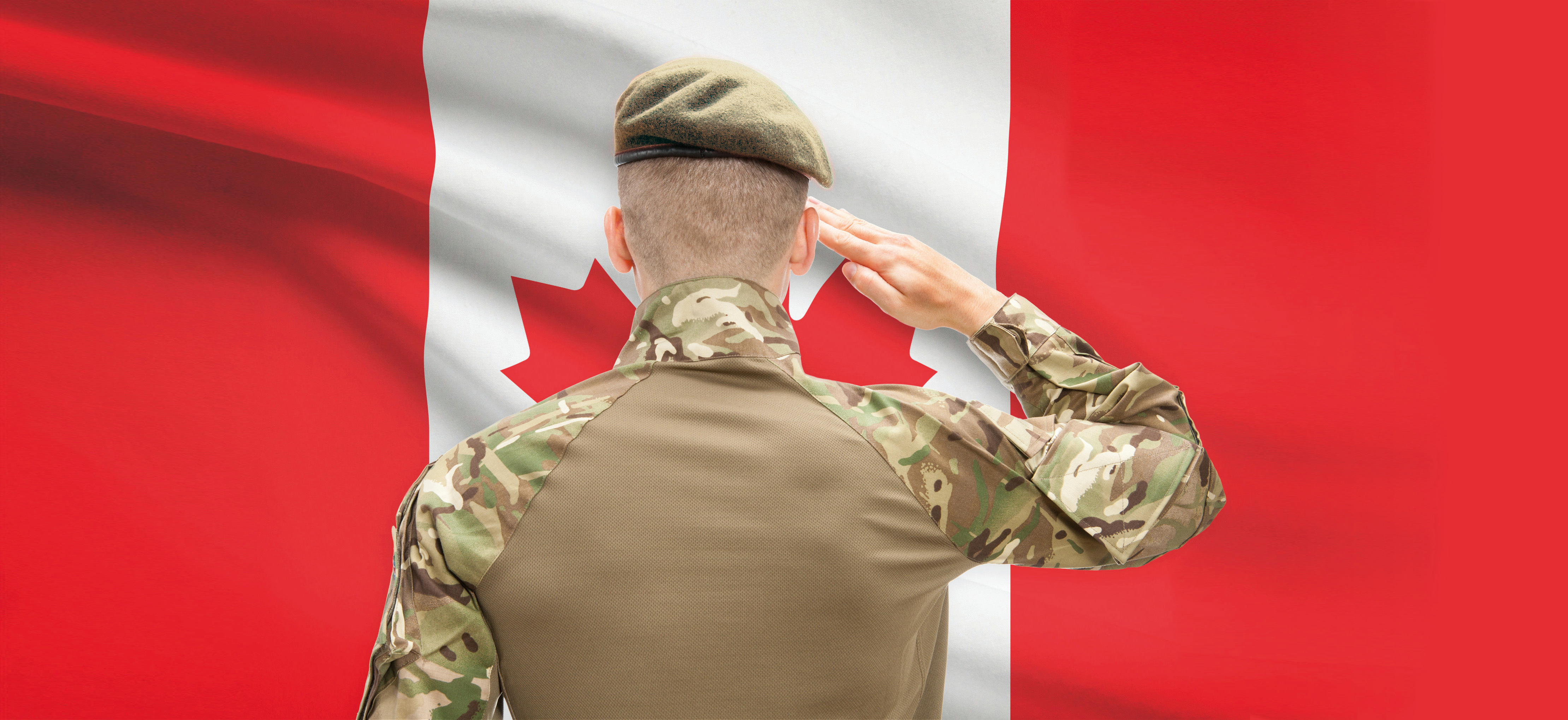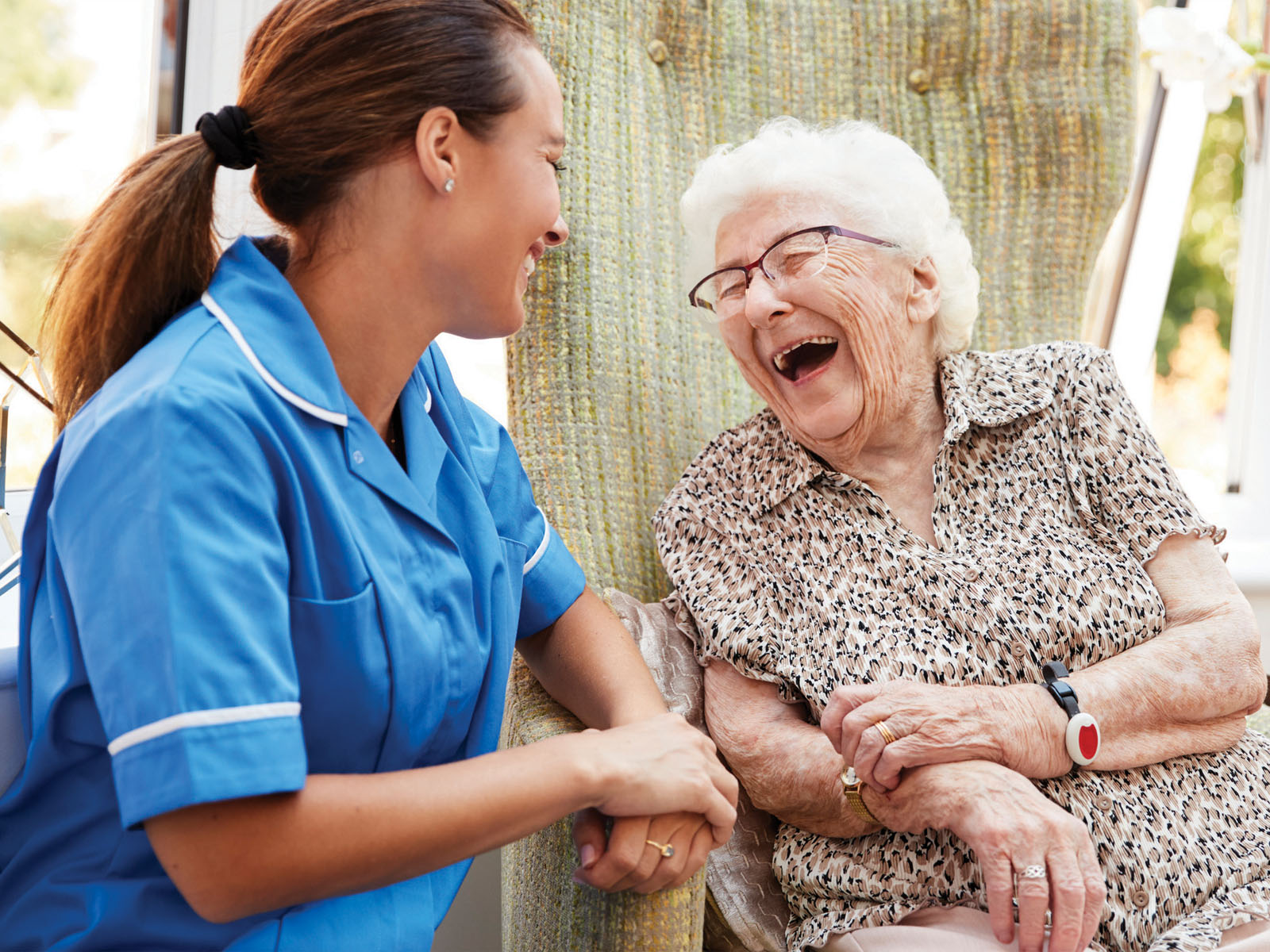A brief book at veterans and caregiving
By Mary Bart
Statistics Canada estimates there are 649,300 Canadian veterans and Royal Canadian Mounted Police veterans who are eligible for support from Veterans Affairs Canada.
Unlike in other caregiving situations, caregivers of veterans often have to deal with and help to manage physical, physiological and mental health conditions such as operational stress injury. Operational stress injury is a persistent psychological issue caused from operational duties.
Dr. Belinda Seagram from the Veterans Transition Network—the only charity that delivers mental health services specifically for veterans—suggests that such conditions can stem from single-event trauma or, more often, be the result of repeated exposure to trauma over the course of a person’s duties. Furthermore, operational stress injury can lead to depression, anxiety and post-traumatic stress disorder (PTSD).
Standing down
When a veteran finishes their career with physical or mental health injuries, they will often struggle to come to terms with who they are and where they belong. Often, a person’s core beliefs will have been shattered by the extreme events they have witnessed or experienced, and they may struggle to reconnect when they return. In fact, research shows that a third of Canadian veterans report difficulty in transitioning to civilian life and feeling isolated. The period right after leaving service has been shown to be a critical point.
Seagram believes, however, that recovery is possible—noting that the end goal of treatment for an individual is not necessarily to return to being the same person they were before injury. Rather, she suggests, it is possible, through treatment, to discover a new identity that reclaims some of what was lost and to learn to build resiliency.
For veterans, this type of work is time consuming and labour intensive. It usually means visiting the emotional places that they have been most trying to avoid. And doing this work in isolation is difficult, so Seagram advocates recovery within supportive communities.
Beyond the basics
In addition to actually providing care, caregivers and family members are often asked to help veterans complete online applications for benefits and register for programs.
According to Captain Sean Bruyea, although completing online forms sounds like an easy way for veterans to apply for help, it is one of the barriers that actually makes it harder. Despite his university degrees, Bruyea was unable to read a book for 10 years after his service during the first Gulf War. Help filling out forms was certainly needed.
The burden of waiting
Although benefits are available to help veterans, the process of submitting a claim and waiting for its acceptance is often painful and frustrating. According to a CBC article published in November 2018, more than 3,000 veterans waited over a year for their disability claims to be processed, reassessed or reviewed by Veterans Affairs Canada (VAC) during the previous budget year. The article quoted Don Leonardo, a former peacekeeping soldier: “You’re sitting there in limbo.”
For the record, according to VAC, 15,949 applications (43 per cent of the total) were completed within the department’s self-assigned target timeline of 16 weeks. A further 17,650 (48.2 per cent) took between four months and a year to be processed, while 3,110 applicants (8.5 per cent) had to wait for more than a year.
Caregivers of veterans serve our country and make personal sacrifices every day. Even with the current government programs, more could be done to help and support them. Our Canadian veterans are heroes, and their caregivers are heroes too. Next time you meet a veteran’s caregiver, please remember to say: “Thank you for your service.”
Meet Marie Andrée Malette
My name is Marie Andrée Malette. I am a registered nurse and also the proud spouse of a veteran who battles with PTSD every day.
Our journey began in 2007 when, after many years as friends, we started dating. At the time, Joel told me that he was planning on leaving the Canadian Armed Forces, where he was a police officer, and going to work for Hydro-Québec as a protection officer for the nuclear plant in Trois-Rivières. On a dinner date, the first thing he said to me was: “When I came back from war, [where he had served as a close protection officer for a general], I was not the same and it took me about a year to actually admit that I had a problem. I didn’t sleep. I was so anxious I wouldn’t leave my home.”
It was during that period that Joel was diagnosed with PTSD related to his service in Afghanistan. After a year of treatment he was cleared to go back to Afghanistan. He was in remission, he could pass the physical… he was deployed again!
Being a psychiatric nurse, I asked Joel all the right questions over dinner and thought: “I can do this. He’s medicated and stable, and he doesn’t have a drink or drug problem. He’s decent, patient and kind to me.” Little did I know, I was in for quite the ride!
A life of anxiety
So, fast-forward to 2009, when I found out I was pregnant! It was then that I saw what anxiety could do to a person. I lived that pregnancy alone. Joel never came to any of my prenatal appointments, admitting that he was scared of everything medical. In October 2009, like a good soldier, he drove me “military police style” to the Montfort Hospital where, after four hours of labour, I delivered a 7.5-pound little boy! Joel did not attend the delivery. All I can remember from this day is feeling happy to finally see our child, but also sad that his father wasn’t able to see him come into the world.
From 2009 to 2012, we rode a rollercoaster of emotions. Joel was working 12-hour shifts (mostly nights) at the Hull Casino, and trying to cope with the lack of sleep caused by a child who cried a lot. He would spend most of his days off in bed or on the couch. The first thing he said to me when he came down in the morning would be: “I’m so tired.” He would find 1,001 reasons not to go on vacation: He was scared of planes but wouldn’t admit it. He also wouldn’t do public places; slowly, he was withdrawing from real life. He would spend crazy hours in front of his computer, playing video games, drinking Coke and eating junk.
In 2012, Joel landed a new job at Canada Post. We also became pregnant for a second time. I took care of the house—big renovations and all—and made sure that the grass was cut or snow
removed. I also looked after my ill mother and worked full time.
We were at war… At home!
At his new job Joel seemed to be in constant confrontational mode, and at the six-month mark he had to stop working. He was depressed, angry and paranoid. We would make detours when there were cars parked on the side of the road, and he was visually roaming buildings for potential dangers and terrorists that would hurt his family. Joel would be so paranoid about the baby not breathing that he would look in the back at least 30 times in a 20-minute drive. Driving behind a truck that smelled of diesel would trigger him, cooking meat would trigger him (we ate a lot of pasta that year!), and he would have nightmares about war and would wake up in the middle of the night yelling and screaming military slang that I didn’t understand, seeing sand on the carpet and smelling the rotting flesh of Afghanistan.
New beginnings
That summer I didn’t have a minute to myself. VAC offered some help but we got buried in paperwork. It took us 18 months to get it right, with the help of precious people who walked into our lives.
I went back to work full time and continued our battle with VAC to get more help. Joel got somewhat better, but I knew he needed more than just pills and to sit down with a psychologist once a week to shake off his demons.
Joel did start eye movement desensitization and reprocessing, which was at first horrible but eventually gave some quite good results. Having worked in psychiatry most of my life, I knew the importance of having Joel seen by an occupational therapist and physiotherapist. The occupational therapist gave Joel the tools to cope with his memory loss and having a schedule, and also improved his sleep pattern, while a devoted physiotherapist helped Joel to feel confident that he would not be attacked.
Today, I can say that we are close to his baseline, but we still have some work to do. Joel is taking part in a vocational rehabilitation program. He is trying to adapt what he has learned in the Canadian Armed Forces to eventually go back into the workforce. He hasn’t taken any medication in months. With the help of VAC, our family is coping. We are teaching our kids about Dad’s disability and how we can help him get better. We are even planning our first family vacation! There are still good days and bad days, but we have now accepted this as our normal.
If there is one thing I would like people to understand it is that a soldier with PTSD is not alone—there are people at home who are suffering, too. And when you help the soldier get better, you support an entire regiment!

Where to find resources
Caregivers Brigade
Marie and two other women have created the Caregivers’ Brigade, which works with existing departments and organizations to benefit the families of the ill and injured.
canadianfamilies.wixsite.com/caregivers-brigade
Caregiver Zone
Launched in early 2018 in conjunction with Saint Elizabeth Health Care, the Caregiver Zone focuses on the health, life skills, preparedness and social integration of those who provide care to veterans. It is an online tool that supports informal caregivers and families of Canadian Armed Forces members and veterans, helps with building problem-solving and resiliency skills, and offers support from peers and trained caregiver coaches.
caregiverzone.ca
Caregiver Recognition Benefit
Caregiver Recognition Benefit supports caregivers of the most seriously disabled veterans—those who, but for their caregiver, would require institutionalized care.
The Caregiver Recognition Benefit is a monthly tax-free amount of $1,000. Both the veteran and their informal caregiver, who must be older than 18 years, must apply. The benefit is paid directly to only one family or unpaid caregiver. Hired caregivers are not eligible. Of note: Those currently receiving the Family Caregiver Relief Benefit, will have to reapply for this new program.
Veterans Independence Program
Veterans who receive disability benefit or Prisoner of War Compensation, or who are on a low income, may qualify for the Veterans Independence Program. This program helps veterans remain self-sufficient in their home and community by providing financial assistance for various homecare supports and services, including personal care.
The personal care component of the program provides funding for an individual, other than a health professional, to assist or supervise the veteran with daily living (e.g. feeding, washing, dressing, grooming/personal care, toileting, taking medications and mobility)
Diagnostic or healthcare interventions can also be provided by a regulated health professional in the veteran’s home. Veterans can receive care in their home from a registered nurse for wound care, health teaching, dialysis, medication administration and management, and interventions to address psychological conditions including palliation and grief support.
Attendance Allowance
The Attendance Allowance is a monthly, tax-free payment that is payable to individuals who have a disability pension of one per cent or more or who receive Prisoner of War Compensation (both under the Pension Act) and who are totally disabled and in need of assistance with daily living tasks. It is paid directly to the veteran to assist with the cost of hiring care services. The amount payable is based on the degree of attendance needed for day-to-day personal care.
Veterans Transition Network
Approximately 33 per cent of veterans report difficulties with transitioning back to civilian life. With this in mind, the Veterans Transition Network provides a variety of programs to help veterans reconnect, practise communication skills to rebuild their relationships, manage and cope with symptoms, and plan their futures.
vtncanada.org













